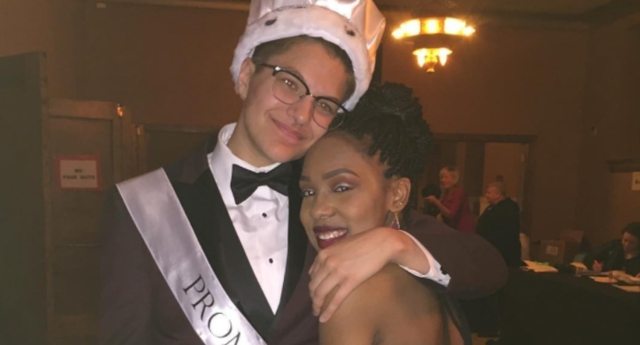‘Meet me at McDonald’s’ hairstyle banned by UK school

A school in the UK has banned a hairstyle popularly known the ‘meet me at McDonald’s’, alongside a long list of other hairstyles.
The cut has been banned for boys. It is typically longer on top, sometimes permed, with short-cut sides and a long floppy fringe.
It was banned by the headmaster at Great Yarmouth Charter Academy, Barry Smith, who wrote in a letter to parents that variations on the style were banned.
He wrote that “variations on the style often known as ‘Meet me at McDonald’s” hairstyle, as well as a list of other types have been banned.

Headmaster Barry Smith (Twitter)
“Most pupils dress appropriately and most have hairstyles that are not extreme. We expect all pupils to meet this standard,” Mr Smith wrote.
He continued: “The school will happily provide families with a PowerPoint of unacceptable styles to avoid.”
Other hairstyles banned by Smith include longer tops which are not graduated with extremely short sides, overgrown and heavy fringes brushed forward to cover part of the face, high top styles with height, other styles with ‘excessive height’, any style of Mohican and shaven parting lines.
The letter was sent to parents of almost a thousand high-school-age students.
According to iNews, the headmaster is described by parents as a “bully”.

(Getty)
The school, iNews reports, is known for being the poorest performing in Norfolk.
The Inspirational Trust recently took over the school and renamed it Charter Academy, but parents have set up a Facebook group titled ‘Yarmouth High Worried Parents’.
The Facebook page reads: “There was not a problem with the school policies as listed when we signed up for our children to attend the school.
“But just [Mr Smith’s] intense didactic like schooling and borderline bullying we have witnessed.”
One parent, Karen Leeder, who posted the letter online, described the new hairstyle policy as “absolutely ridiculous”.
Another parent, Rachael Havens, added: “You can’t take time off sick as it affects your education – but they will happily send you home because they don’t like your hairstyle.”
A third added: “A hairstyle does not affect a child’s learning”, saying the policy is “a bit silly”.
Schools in the UK and abroad have been historically criticised for policing hairstyles, particularly those worn by black students.
And transgender students around the world face issues with school staff sometimes enforcing uniform policies which mean they are forced to wear gendered items of clothing which do not fit with their gender identity.
A school in the UK back in 2016 threatened a transgender student with suspension for wearing her female uniform.
Trans student also face issues with staff using deadnames, or seeking parents’ approval before accepting their gender identity.
Last year, a 15-year-old transgender boy died by suicide after his school refused to accept his transition.
A group of teenage boys in the UK in 2017 donned skirts to protest a discriminatory uniform policy during a heatwave.
In the US, a school district was ordered to pay out $800,000 after a transgender student sued the school for banning him from using the bathroom that corresponded with his gender identity.

A transgender student in the US who became the first trans male prom king will not attend his graduation ceremony because he will be deadnamed in the ceremony.
And a school in Australia recently celebrated welcoming its first ever transgender student to its ranks, but not everyone saw it as cause for jubilation.
The private Glennie School circulated an email to parents which welcomed the new student who would be joining the middle school.
But it was the next part of the email that parents took objection to – the fact that the young girl is transgender.
And family of a transgender 8-year-old sued a private school for “intentional infliction of emotional distress” after the school allegedly refused to use female pronouns or let her use the female restroom.

